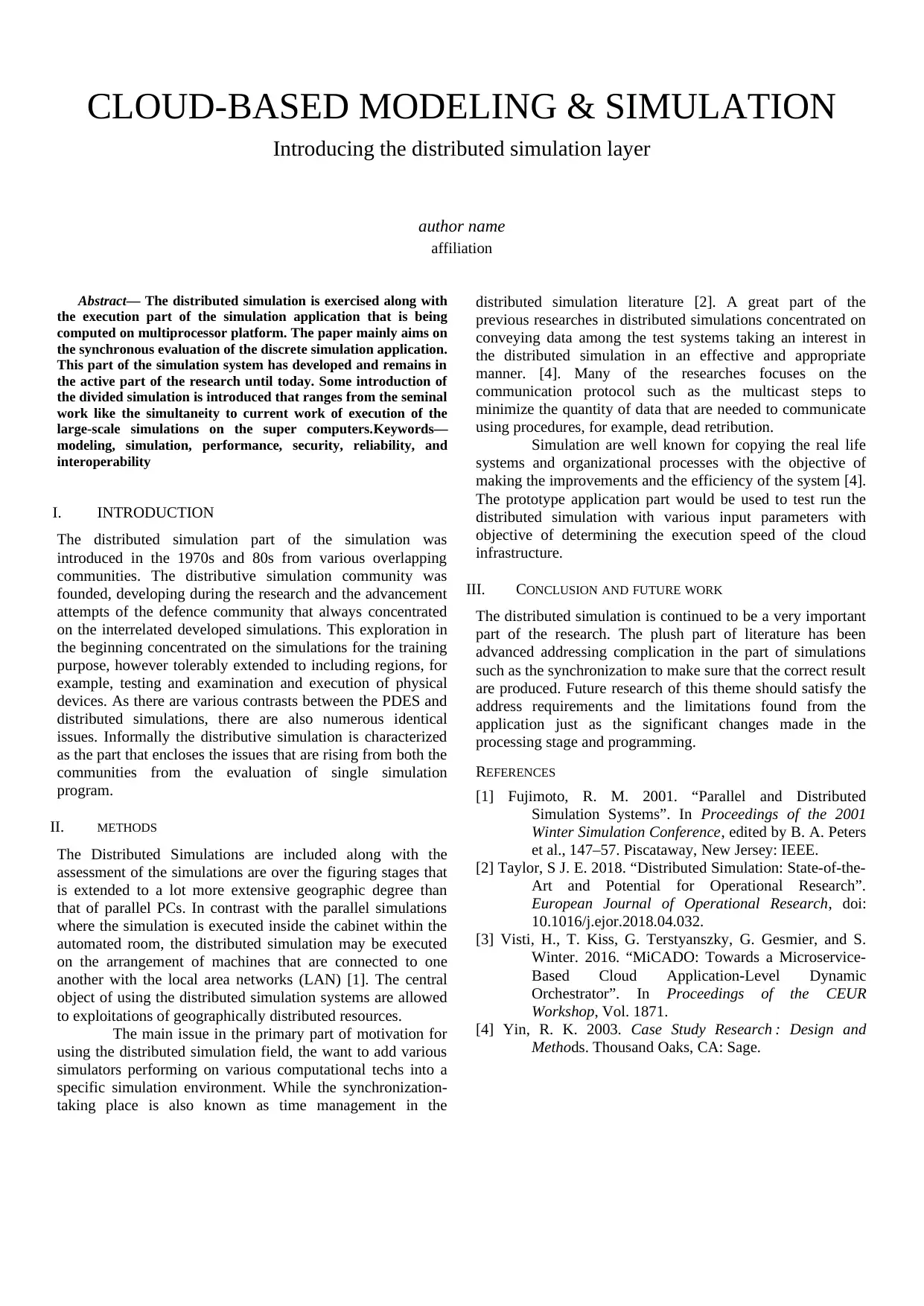Cloud-Based Modeling and Simulation: Distributed Simulation Analysis
VerifiedAdded on 2023/04/22
|1
|750
|186
Report
AI Summary
This report delves into the realm of cloud-based modeling and simulation, with a specific emphasis on the distributed simulation layer. It introduces the concept of distributed simulation, highlighting its evolution from early developments to current applications on multiprocessor platforms. The report examines the methods employed in distributed simulation, including the use of LANs to connect machines and exploit geographically distributed resources. A key aspect discussed is the synchronization process, also known as time management, which is crucial for ensuring accurate results. The report also touches upon the importance of communication protocols and explores future research directions, particularly addressing the limitations found in applications and the significant changes in processing stages and programming. The report concludes with references to seminal works and current research in the field, emphasizing the ongoing relevance of distributed simulation.






![[object Object]](/_next/static/media/star-bottom.7253800d.svg)